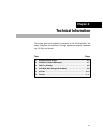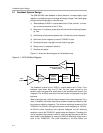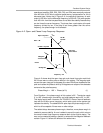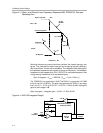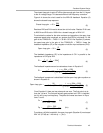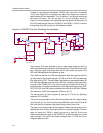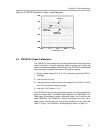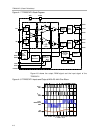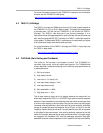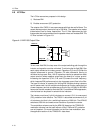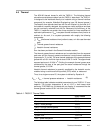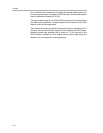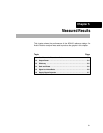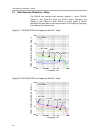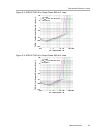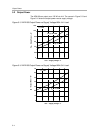
TAS5111 (H-Bridge)
4-9
Technical Information
For more information concerning the TPA2001D1 operation and modulation
scheme, see the TPA2001D1 data sheet
http://focus.ti.com/docs/prod/folders/print/tpa2001d1.html
4.3 TAS5111 (H-Bridge)
The TAS5111 converts the PWM signal from the 3-V peak-to-peak outputs of
the TPA2001D1 to 18-V to 29.5-V peak-to-peak. This allows the output power
to increase from 1 W with just the TPA2001D1 to 100 W with the TAS5111
H-bridge. The TAS5111 has short-circuit and thermal protection. It is a
high-performance H-bridge designed for audio with fast rise and fall times and
well−matched output MOSFETs. Therefore, the TAS5111 adds little distortion
to the system. To obtain peak TAS5111 performance, the schematic and layout
of this reference design must be followed precisely.
For more information on the TAS5111 H-bridge and TAS5111 layout tips, see
the TAS5111 data sheet.
http://focus.ti.com/docs/prod/folders/print/tas5111.html
4.4 TLV2464A (Gain Setting and Feedback)
The choice of the op amp in this system is critical. The TLV2464A is a
low-noise, high-current, rail-to-rail output quad op amp. The TLV2464A was
chosen because it meets the following list of critical op amp specifications at
a reasonable price:
1) Rail-to-rail output
2) High output current
3) Low noise < 15 nV/sqrt (Hz)
4) Low input offset voltage < 3 mV
5) Low input base current
6) Gain bandwidth > 4 MHz
7) High slew rate > 1 V/µs
The op amp needs to have rail-to-rail outputs because the outputs will rail
when there is signal but TAS5111 is in RESET. High output current is important
because it less susceptible to the switching noise that could cause signal lines
of a low current op amp to be corrupted. Using a low current op amp greatly
increases noise and distortion, often to the point of nonfunctionality. Low offset
voltage is needed because the integrator has a DC gain of 100 V/V, and the
integrator needs to be set at mid level. Low input base current (IIB) is important
to limit offset for the same reason. Low noise is obviously important to limit the
noise of the system because the op amp contributes noise in the gain stage,
the integrator, the feedback (/45), and the midsupply generator. High gain
bandwidth and slew rate are important to limit distortion and help with stability.



